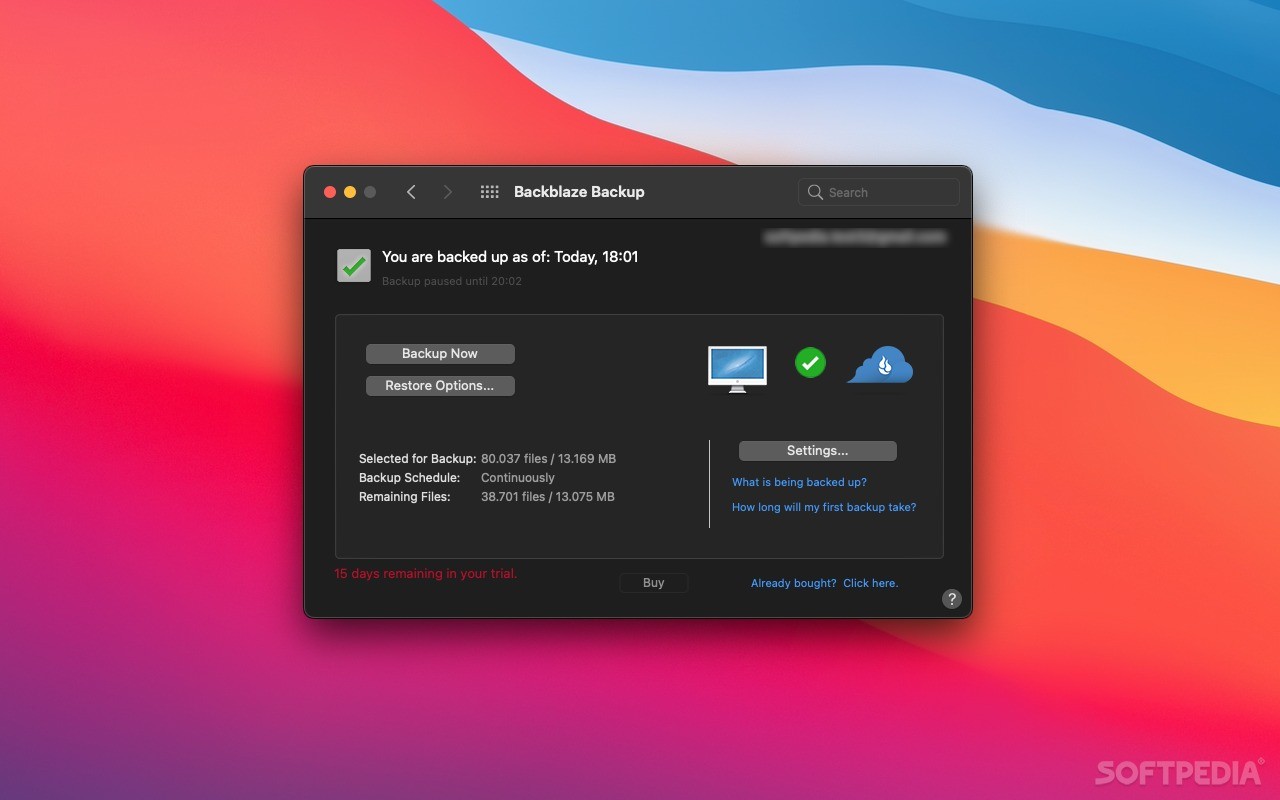
I also had a lot of trouble with the downloadable binary on Mojave. Before installing, you will need to disable unsigned kernel extensions protection by running csrutil disable. After trying and failing with KernSafe, I decided to give the open source iSCSIInitiator a try. This seemed promising from a cost perspective, but I could not get it to work (at least on Mojave).
#Backblaze synology 2019 free#
A third option I came across was KernSafe, which has a free pricing tier for personal use. Most people recommend globalSAN ($89) or Xtend SAN($249), both of which are pricey options (remember, we are trying to keep this solution cost-effective). MacOS does not come with an iSCSI initiator which is required to mount the iSCSI target as a local drive. Any data you wish to have backed up will need to be moved or copied to this drive.
#Backblaze synology 2019 Pc#
Note that this will be a new drive on your Mac or PC that will be formatted by the operating system. The wizard will walk you through the creation of both and will have you create a LUN of a size of your choosing. To set up an iSCSI target on the Synology, open up the iSCSI Manager (from the main menu), click on Target and create a new target and LUN. It's small and quiet and can easily be run headless. Remember, I said there were tradeoffs.Ī Mac Mini is perfect for this task. So, this option requires a dedicated computer to run the Backblaze client and the Synology has to be mounted as a local drive as Backblaze does not support network shares. Their client only runs on a Mac or PC, but is written natively for the platform (unlike Crashplan which had a memory-intensive Java client). Backblaze over iSCSIīackblaze offers an unlimited personal backup plan for $5/month that will back up any local drives from a computer. They aren't without some tradeoffs, but if you are looking for inexpensive, unlimited cloud backup, these are two decent options. I didn't find their control panel or service to be consistently reliable, so I've been on the search for other solutions and have two that work decently well. Over the last year, I've tried some other options (like hubiC) for larger inexpensive storage.


In 2017, Crashplan did away with their personal plan, so this route is no longer an option. For the price and the self-contained solution, this was an acceptable tradeoff, at least for me. The downside to Crashplan was that every time the Synology OS would be updated there was risk of the client breaking and needing to be re-installed and/or re-configured. Crashplan had an unlimited personal plan for less than $5/month and their client could run directly on the Synology.

It's great to have 16TB of available network storage, but there are limited options for a cost-effective cloud backup of multiple terabytes of data.Ī couple of years ago, there was one decent option for backing up Synology data to the cloud. It's used mostly as a place for shared content, Time Machine backups and redundancy of video data. I have a Synology DS415+ that performs wonderfully as a NAS.


 0 kommentar(er)
0 kommentar(er)
